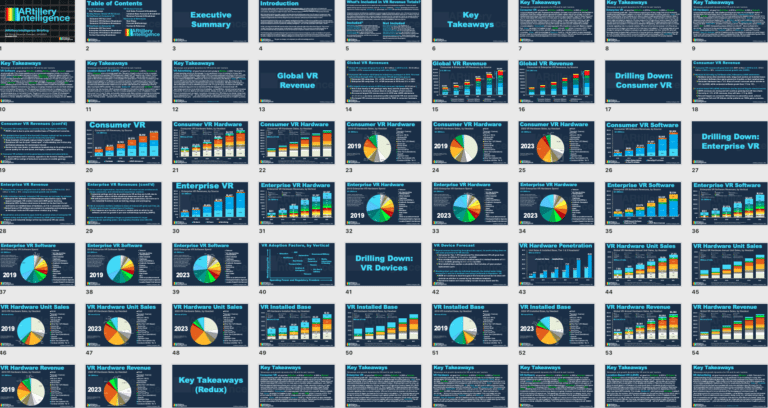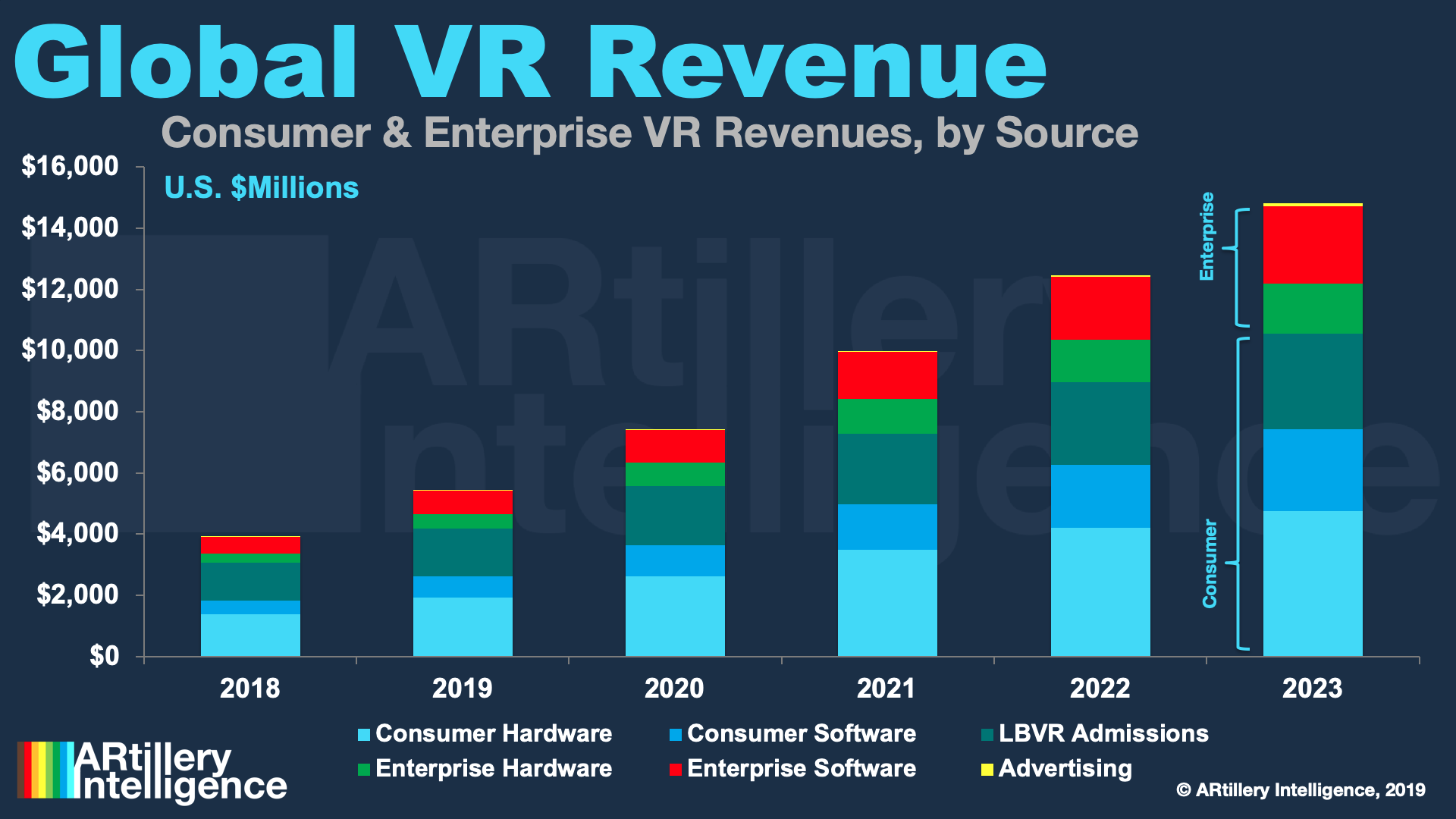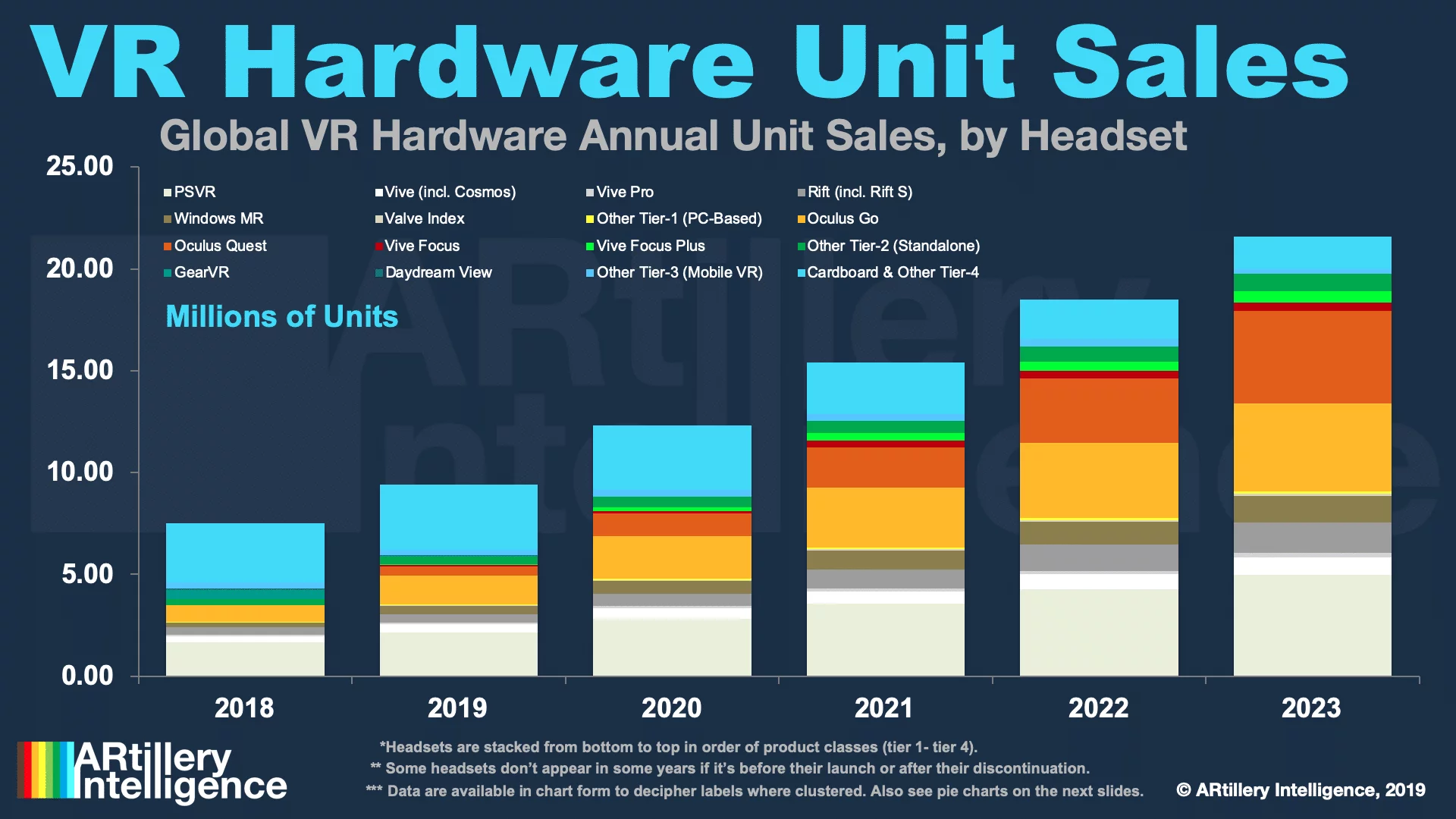
“Behind the Numbers” is AR Insider’s series that examines strategic takeaways from ARtillery Intelligence data. Each post drills down on one topic or chart. Subscribe for access to the full library and other knowledge-building resources.
VR continues to show early-stage characteristics, including erratic interest and investment. But how big is it, and how big will it get? AR Insider’s research arm ARtillery Intelligence has quantified the revenue position and outlook, resulting in the fourth and latest wave of its VR forecast.
Built from daily market coverage, insider interviews and 15-years of market-sizing experience, ARtillery Intelligence has constructed disciplined and independent forecasting models. The analysis is segmented into several revenue categories and the methodology can be seen here.
So what were the results? At a high level, the firm projects VR revenues to grow from $3.9 billion last year to $14.8 billion in 2023, a 31 percent CAGR. That includes lots of moving parts and sub-sectors including consumer, enterprise, hardware, software, advertising and LBVR.

Drilling Down on VR Hardware
Drilling down into one of those areas, how does VR hardware revenue look? The forecast projects it to grow from $1.67 billion in 2018 to $6.39 billion in 2023. That includes spending across consumer and enterprise markets, where the former leads but by a diminishing share over time.
The market share leader in revenue and units is Playstation VR (PSVR) with an estimated 2.2 million units sold this year. But, the most notable trend in the headset market is the rise of standalone VR and the corresponding fall of mobile VR such as Gear VR and Daydream View..
Due to Oculus’ loss-leader pricing, Go and Quest are within striking distance of price points previously occupied by GearVR and Daydream View. The same pricing strategy will drive Rift S unit sales in the coming quarters, though the equally-priced Quest will outsell it 3 to 1 by 2023.
Quest’s unit sales are already looking strong according to several signals. Based on disclosures about Quest’s content sales, we’ve extrapolated its corresponding hardware sales. That stood at about 300,000 units in September, on pace to reach about 470,000 units by the end of the year.
Snowball Effect
Compounding passive attrition to mobile VR — driven by these better alternatives — the segment is also actively retracting from the market. Cardboard and tier-4 headsets will be unsubstantial in revenue and market impact, though they’ll still have substantial unit sales in markets like China.
Meanwhile, Tier-1 (PC-based) and Tier-2 (standalone) VR will grow in the aggregate from 3.8 million in 2018 to 19.76 million by 2023. This excludes mobile VR and cardboard to get a better picture of the total addressable market for VR startups and content creators (see below).
These annual sales correlate to a cumulative installed base of 8.01 million in 2018, growing to 48.5 million by 2023. Installed bases generally start slow then snowball. This calculation applies a 3-year replacement cycle, which shrinks over time as innovation cycles and demand accelerate.
This also notably puts the outer year of this forecast about halfway to the 100 million “magic number.” As we’ve examined, this volume of devices attracts enough developers to kickstart a virtuous circle of content that attracts users, which further attract developers and around we go.
Cautiously Optimistic
But the above will take a while. ARtillery Intelligence’s position on VR revenue growth is best characterized as cautiously optimistic. Scale will come, but slower than many industry proponents have thought, due mostly to the pace of adoption and other signals ARtillery Intelligence tracks.
In fact, you may notice that VR revenue projections in outer years are lower than other figures you may have seen. They’re also lower than ARtillery’s past estimates, as it adjusts to market signals. This is common in industry forecasting, as market watchers course-correct to market variables.
Stay tuned for more forecast tidbits and insights over the coming weeks. Meanwhile, find out more about the report methodology/inclusions or access the entire thing here. There will be lots to unpack as the VR market unfolds with a combination of expected and unexpected outcomes.
For deeper XR data and intelligence, join ARtillery PRO and subscribe to the free AR Insider Weekly newsletter.
Disclosure: AR Insider has no financial stake in the companies mentioned in this post, nor received payment for its production. Disclosure and ethics policy can be seen here.



